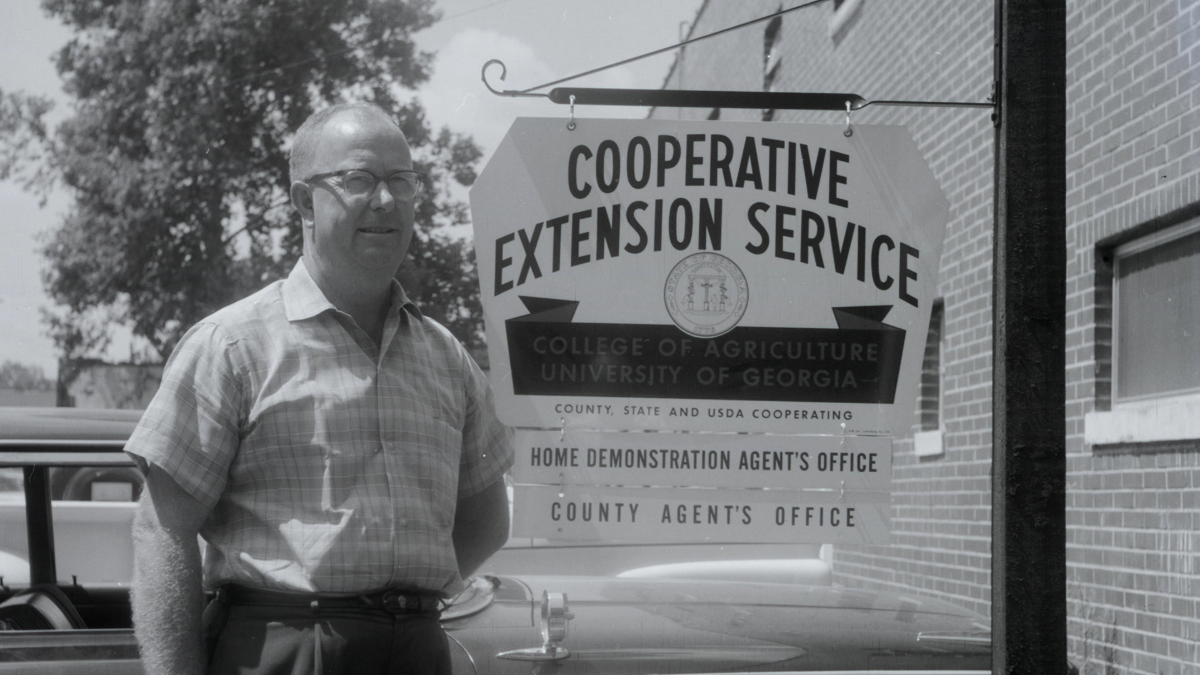A Smith-Lever Act for the AI Age? Reimagining Extension Programs
Kevin Frazier / Jan 30, 2025
A 1969 photo of an extension service office in Tifton, Georgia. The Smith-Lever Act of 1914 established a national "Cooperative Extension Service" to run outreach programs through land-grant universities to educate rural Americans about advances in agricultural practices and technology. Source
A vibrant small business community across the United States is not a happy accident. The family farmer, Main Street shopkeeper, and, nowadays, the Etsy goods producer all depend on national investments in public infrastructure. Air and rail traffic to take goods from the frontier to the farmer’s market. Roads to allow suburban folks to get to the commercial core of the city. Reliable access to high-speed internet to market new creations and find new customers. The deliberate decisions of prior generations to invest in those public assets directly impacted the durability and prosperity of the small businesses. Support for those initiatives aligned with the idea that what’s good for the Mom-and-Pop store is good for America.
In times of economic and technological upheaval, there’s a need for even more direct support for small businesses. In 1914, President Woodrow Wilson signed the Smith-Lever Act into law. The Act transformed the nation’s Land-Grant Institutions (LGIs)–Oregon State University, Montana State, Virginia Tech, and so forth–into small business accelerators focused on the agricultural community. LGIs hosted leading academics and inspired students who held knowledge that could improve the practices of farmers. Rather than allow for the slow drip of information from the Ivory Tower to the farmer’s field, the Act created Extension programs that tasked LGIs with disseminating their findings. The Act itself outlines the purpose of Extension programs in more detail:
[t]he giving of instruction and practical demonstrations in agriculture and home economics to persons not attending or resident in agricultural colleges in the several communities, and imparting to such persons information on said subjects through field demonstrations, publications and otherwise.
Extension programs exist today and continue to carry on that purpose.
This transfer of knowledge is a very human endeavor. Extension programs send their staff into local communities. They attend community gatherings, reach out to farmers, start clubs at local schools, and find ways to immerse themselves in the needs of their area. They build trust. Pairing academic insights with agricultural expertise has uplifted small farmers for generations. Far more farmers would have bowed out of an increasingly competitive, concentrated market without support and guidance from Extension staff.
Another upheaval is well underway. The economy continues to evolve amid a new international order and economic system. Recent technological advances in artificial intelligence (AI) have disrupted the status quo. Small businesses risk getting left behind. Unlike their massive corporate rivals, they do not have the luxury of asking employees to conduct basic research or to go study the latest developments in AI. That’s precisely why a new version of the Extension program–call it AI Extension–is necessary in the age of AI.
Public universities around the US house some of the leading thinkers in AI and related fields. They tend to produce knowledge in inaccessible or unuseful formats. Academic articles, rambling podcasts, and even essays on popular blogs are unlikely to contain the practical knowledge small business owners require to adopt AI into their operations. That should change.
Public universities ought to serve public purposes. They should serve as the sorts of institutions envisioned by President George Washington in his farewell address–as institutions "for the general diffusion of knowledge." A point he further emphasized in his will, in which he expressed his "ardent wish to see a plan devised on a liberal scale which would have a tendency to spread systematic ideas through all parts of this rising Empire[.]" In line with that purpose, public higher education institutions should require their students, scholars, and faculty to spend less time debating amongst themselves and more time demonstrating the practical use cases of their studies. AI Extension programs would mandate this shift in orientation–less navel-gazing, more community engaging.
Small businesses will likely find themselves at an even greater competitive disadvantage without such programs. Behemoth companies have armies of employees studying how to use AI to become more efficient and responsive to consumer preferences. If small businesses miss this wave of innovation, they will sink. That’s not an acceptable outcome. Congress ought to take a page from the early 20th century and again explicitly direct our public universities to focus their studies on the drivers of American opportunity and entrepreneurship--small businesses.
The scope of AI Extension programming should reach beyond positive use cases of AI, such as improved procurement and expedited hiring. Extension staff can also inform small businesses of the potential downsides of excessive reliance on AI as well as on how to evaluate different AI products critically. For example, as Amazon learned, AI hiring tools may not always increase the odds of hiring the most qualified applicants. Unrepresentative training data can push certain applicants to the top of the pile for reasons other than their qualifications. Small business owners will want to avoid that mistake. They will also benefit from learning how to spot AI scams–instances in which companies exaggerate the capacity of their AI tool. One lesson may equip the local business community with the means to distinguish between AI assistants, which are reactive and assistant in limited situations, and AI agents, which may act autonomously on behalf of a user and pursue abstract goals.
A comprehensive, practical understanding of AI among small businesses could also shield them from becoming too dependent on Big Tech. As things stand, a lack of practical knowledge renders many smaller shops reliant on bigger companies for new tools. Trickle-down knowledge diffusion is a poor approach, though. Small companies may not have the funds to pay for “pro” accounts–the most capable versions of the latest models. In turn, they will always be a step behind their larger peers. That’s not a recipe for widespread innovation or broad economic prosperity. AI Extension programs can plant the seeds of innovation on Main Street so that small and medium-sized business owners are not beholden to the whims of corporate behemoths.
AI Extension programs would have the added benefit of sending young Americans into diverse, rural communities. It seems as though the days of people asking what they can do for their country are long gone. That’s another unacceptable outcome. More generally, service to others and civic participation keeps the American project going. We cannot lose that mentality if we’re going to remain a national community amid substantial economic and geopolitical twists and turns.
The time has come for AI Extension programs. AI advances should serve the common interest rather than the interests of a few. The diffusion of such knowledge will not happen by accident. We must consciously ensure that tinkerers and innovators have strong connections to researchers and scholars.
Authors
